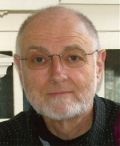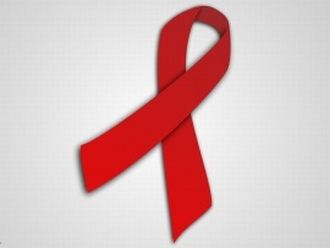SNc Channels:About Salem-News.comSalem-News.com is an Independent Online Newsgroup in the United States, setting the standard for the future of News. Publisher:Bonnie King CONTACT:Newsroom@Salem-news.comAdvertising:Adsales@Salem-news.com ~Truth~ ~Truth~
~Justice~
~Peace~
TJP
|
Jul-14-2010 14:38 
Obama's New National HIV/AIDS Strategy
By Ralph E. Stone Salem-News.com
At least the spotlight will shine bright on HIV/AIDS again.
(SAN FRANCISCO) - On July 13, 2010, the Obama administration unveiled a new national HIV and AIDS strategy, which sets a goal of reducing new infections by 25 percent over the next five years. See <www.aids.gov> The strategy also calls for a renewed focus on increasing access to care, with the goal of getting treatment for 85 percent of patients within three months of their diagnosis; concentrating HIV prevention efforts at the highest-risk populations, which include gay and bisexual men as well as African-Americans; and increasing education about the virus, even in communities with low rates of infection. The administration is allocating $30 million from the health care overhaul Congress passed earlier this year toward implementation of the strategy.
In one step toward reducing disparities in access to care, on July 9th, the Obama administration reallocated $25 million to states that have waiting lists for their AIDS Drug Assistance Programs (ADAP), which provide treatment help for the uninsured and underinsured. The National Alliance of State and Territorial AIDS Directors reported that more than 2,200 people in 12 states were on waiting lists for ADAP help. The San Francisco Bay Area and Los Angeles County, where two-thirds of all Californians living with HIV reside, should greatly benefit from the new national strategy.
Criticism of Strategy
Why did it take 15 months to develop the strategy? And why didn't President Obama even mention AIDS for the first five months of his presidency and for underfunding AIDS programs? The new HIV/AIDS strategy does not call for a major increase in the roughly $19 billion the federal government spends on HIV/AIDS programs, though administration officials claim new benefits will be provided by the recently passed health care reform law. We shall see.
Background
Once an AIDS diagnosis was virtually a death sentence. Now it is largely treatable as a chronic illness although medications are costly. But although it is treatable, AIDS is still a public health emergency. There are about 1.7 million Americans who have been infected with HIV since 1981; approximately 56,000 become infected each year; and more than 1.1 million Americans are living with HIV. There is a new HIV infection every 9-1/2 minutes in the U.S. But about one of every five people living with HIV doesn't know it. The population groups at the greatest risk are gay and bisexual men, who make up about 50 percent of new infections annually, and African-Americans.
According to the AIDS Foundation, a San Francisco policy and prevention group, San Francisco has over 1,000 new infections each year with 87 percent being gay men. AIDS/HIV has affected about 28,114 San Franciscans since the epidemic started in 1981. San Francisco accounts for 18 percent of all cases in California and 3 percent of cases nationwide. According to the AIDS Foundation, at the end of 2008, there were 15,757 San Franciscans living with HIV/AIDS
HIV/AIDS Basics
Acquired immune deficiency syndrome or acquired immunodeficiency syndrome (AIDS) is a disease of the human immune system caused by the human immunodeficiency virus (HIV). This condition progressively reduces the effectiveness of the immune system and leaves individuals susceptible to opportunistic infections and tumors. HIV is transmitted through direct contact of a mucous membrane or the bloodstream with a bodily fluid containing HIV, such as blood, semen, vaginal fluid, preseminal fluid, and breast milk. This transmission can involve anal, vaginal or oral sex, blood transfusion, contaminated hypodermic needles, exchange between mother and baby during pregnancy, childbirth, breastfeeding or other exposure to one of the above bodily fluids. Although treatments for AIDS and HIV can slow the course of the disease, there is currently no vaccine or cure.
On a positive note, a week before President Obama's announcement of the new HIV/Aids strategy, scientists at the National Institute of Allergy and Infectious Diseases announced that they had found three human antibodies that neutralize more than 90 percent of the current circulating HIV-1 strains. "This is significant because we've now found antibodies that are good templates for HIV vaccine development," said Peter Kwong, co-author of the study, Structural Basis for Broad and Potent Neutralization of HIV-1 by Antibody VRC01, published in the July 8, 2010, issue of the journal Science.
A Personal Note
The announcement of the new HIV/AIDS strategy brought back memories of the death of our only child Michael, who died of AIDS in November 1984, the Sunday after Thanksgiving. Michael was 19 and a senior at the University of California, Santa Cruz. He would be 45 today. My wife Judi and I received a call on Saturday morning from a physician at a Santa Cruz hospital, who said that Michael had been admitted to the hospital with a serious illness. The physician indicated that if we wanted to see our son alive, we had better rush down to Santa Cruz.
He was indeed diagnosed with pneumocystis, a common AIDS-related illness. We remember the medical staffs' contagion hysteria: gowned and masked up. One of the nurses insisted that we get someone to give him last rites. We declined. Basically, the medical staff had written Michael off. And indeed, back in 1984, AIDS was a death sentence. If he had been diagnosed today, Michael would probably be still alive.
After Michael's death, my wife Judi went back and got her Master of Social Work (MSW) degree at San Francisco State University. While at school, she started an AIDS volunteer program at Kaiser Permanente Hospital here in San Francisco. Michael had our emotional support during his illness, but Judi realized how often many AIDS patients had little or no emotional support. And back then, the air was filled with hysteria and misinformation about the disease. The AIDS volunteer program provided emotional support and information to patients and their loved ones. After receiving her degree, Judi became the social worker in Kaiser's dedicated AIDS unit.
From our own experience, we know that parents of a child suffering from a life-threatening illness face special problems. The death of a child is a devastating experience. It severely taxes a parent's adaptive capacities. In our society, a child's death is unexpected because children are supposed to outlive their parents. A child's death can tear a marriage apart. In our case, it brought us closer together.
Conclusion
The plight of those infected with the HIV virus has improved since 1981 as have Gay rights in general. The announced HIV/AIDS strategy is a modest beginning for the Obama administration, but there is still much more to be done. At least the spotlight will shine bright on HIV/AIDS again.
 Salem-News.com writer Ralph E. Stone was born in Massachusetts. He is a graduate of both Middlebury College and Suffolk Law School. We are very fortunate to have this writer's talents in this troubling world; Ralph has an eye for detail that others miss. As is the case with many Salem-News.com writers, Ralph is an American Veteran who served in war. Ralph served his nation after college as a U.S. Army officer during the Vietnam war. After Vietnam, he went on to have a career with the Federal Trade Commission as an Attorney specializing in Consumer and Antitrust Law. Over the years, Ralph has traveled extensively with his wife Judi, taking in data from all over the world, which today adds to his collective knowledge about extremely important subjects like the economy and taxation. You can send Ralph an email at this address stonere@earthlink.net
Articles for July 13, 2010 Salem-News.com writer Ralph E. Stone was born in Massachusetts. He is a graduate of both Middlebury College and Suffolk Law School. We are very fortunate to have this writer's talents in this troubling world; Ralph has an eye for detail that others miss. As is the case with many Salem-News.com writers, Ralph is an American Veteran who served in war. Ralph served his nation after college as a U.S. Army officer during the Vietnam war. After Vietnam, he went on to have a career with the Federal Trade Commission as an Attorney specializing in Consumer and Antitrust Law. Over the years, Ralph has traveled extensively with his wife Judi, taking in data from all over the world, which today adds to his collective knowledge about extremely important subjects like the economy and taxation. You can send Ralph an email at this address stonere@earthlink.net
Articles for July 13, 2010 | Articles for July 14, 2010 | Articles for July 15, 2010 |




|



 TweetFollow @OregonNews
TweetFollow @OregonNews

 Salem-News.com writer Ralph E. Stone was born in Massachusetts. He is a graduate of both Middlebury College and Suffolk Law School. We are very fortunate to have this writer's talents in this troubling world; Ralph has an eye for detail that others miss. As is the case with many Salem-News.com writers, Ralph is an American Veteran who served in war. Ralph served his nation after college as a U.S. Army officer during the Vietnam war. After Vietnam, he went on to have a career with the Federal Trade Commission as an Attorney specializing in Consumer and Antitrust Law. Over the years, Ralph has traveled extensively with his wife Judi, taking in data from all over the world, which today adds to his collective knowledge about extremely important subjects like the economy and taxation. You can send Ralph an email at this address stonere@earthlink.net
Salem-News.com writer Ralph E. Stone was born in Massachusetts. He is a graduate of both Middlebury College and Suffolk Law School. We are very fortunate to have this writer's talents in this troubling world; Ralph has an eye for detail that others miss. As is the case with many Salem-News.com writers, Ralph is an American Veteran who served in war. Ralph served his nation after college as a U.S. Army officer during the Vietnam war. After Vietnam, he went on to have a career with the Federal Trade Commission as an Attorney specializing in Consumer and Antitrust Law. Over the years, Ralph has traveled extensively with his wife Judi, taking in data from all over the world, which today adds to his collective knowledge about extremely important subjects like the economy and taxation. You can send Ralph an email at this address stonere@earthlink.net




All comments and messages are approved by people and self promotional links or unacceptable comments are denied.
ssnell July 15, 2010 12:36 pm (Pacific time)
It's great that we're finally getting the ball rolling on a plan to help people with HIV. It's a start, but I agree that it's not enough. I found another article on an infectious disease site that goes into further details on the cost of this program— http://www.infectiousdiseasenews.com/article/66562.aspx
[Return to Top]©2025 Salem-News.com. All opinions expressed in this article are those of the author and do not necessarily reflect those of Salem-News.com.